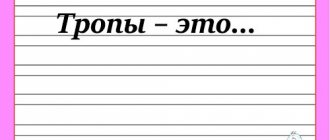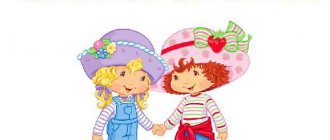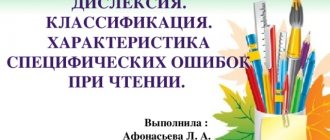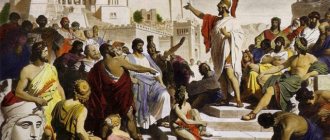Tropes in literature is a system of special linguistic means that is used to achieve imagery and expressiveness of a work of art.
Language serves, first of all, for communication between people in society. But its significance in human life is not limited to this pragmatic role. In addition to this super task, which also includes information content, language and speech are designed to express the speaker’s attitude to the material being presented, his assessment and emotions. From this position, there are a number of expressive means of creating imagery and expressiveness of speech, which are called tropes.
Tropes table with examples
| Types of trails | Definition | Examples |
| Metaphor | a word or expression used in a figurative meaning, which is based on a comparison of an unnamed object or phenomenon with some other one based on their common characteristic. |
|
| Metonymy | a means of replacing one word with another based on contiguity |
|
| Synecdoche | this is an artistic trope, one of the types of metonymy, which is created by transferring the name of an object from its part to the whole and vice versa based on the quantitative relationship between them |
|
| Hyperbola | trope based on excessive exaggeration of the size, strength, significance of the depicted phenomenon |
|
| Epithet | a word that defines an object or phenomenon and emphasizes any of its properties, qualities, characteristics |
|
| Periphrase | replacing a word or group of words to avoid repetition |
|
| Allegory | two-dimensional use of a word, expression or whole text in the literal and figurative (allegorical) sense |
|
| Litotes | figurative understatement of the size, strength, beauty of what is being described. Many phraseological units are based on litotes. |
|
| Irony | using a word or figure of speech in the opposite meaning for the purpose of ridicule |
|
Paths - means of expressive speech
What is a trope?
The linguistic term "trope" literally means "turn" in Greek. It is called a figurative turn of speech created by an artist of words, based on a rethinking of the direct meaning of the word and the emergence of a new, figurative meaning. The trope is based on a comparison of two phenomena that are similar to each other in some aspects or characteristics. The author, using the signs of one phenomenon, characterizes another object with their help, trying to explain it and at the same time create a vivid, figurative idea about it in the reader.
The music rang in the garden with such inexpressible grief. The fresh and pungent smell of the sea On a platter were oysters in ice.
A. Akhmatova. In the evening.
Definition
Let us define what a trope is.
Definition A trope is a figurative figure of speech in which a word or expression is used in a figurative meaning based on a comparison of two objects or phenomena connected to each other by semantic relations.
A trope can be called a form of poetic thinking. An artist of words easily manipulates words, creating new combinations of words in artistic speech, which in an unusual proximity to each other create an unexpectedly bright and visible image:
Stylistic figures
Stylistic figures (figure of speech) are special figures of speech fixed by stylistics, used to enhance the expressiveness of an utterance. For example, stylistic figures include:
- Inversion is a violation of direct word order. For example: We have been waiting for you for a long time.
- Anaphora - unity of command. For example:
Take care of each other, warm each other with kindness. Take care of each other, don't let us offend you.
- Gradation is the arrangement of synonyms according to the degree of increase or decrease in the attribute. For example: Silence covered, fell, absorbed.
- Ellipsis is the omission of any member of a sentence, most often a predicate. For example: We sat in ashes, hail in dust, in swords - sickles and plows.
- Antithesis is a stylistic figure of contrast, comparison, juxtaposition of opposing concepts. For example: Long hair, short mind.
For a complete list of stylistic figures, see the table with examples.
The role of the trope in a work of fiction
Paths serve not only to clarify details, signs and other characteristics of a phenomenon. They, as artistic means, reveal the peculiarities of the creative thinking of the author of the work, who, with the help of various tropes, achieves a figurative picture of the surrounding world. To clearly explain this, let us remember how in his “Notes on Art” the artist N. Zhukov wrote about the variety of ways of figuratively artistic embodiment of an object or object of reality:
How to convey in words the impression of a very fat person? We can say that he is disproportionately fat. You can say it differently: he could hardly move. Or: I had difficulty entering the door. Or again: he was so thick that he resembled a ball. You can determine the thickness by saying that the person was short, he weighed 130 kg. There are hundreds of ways to determine body build. But here’s how convincingly the feeling of a full body can be conveyed through a detail: he was so fat that his cheeks were visible from his back. And you immediately feel how ordinary the previous examples were and how sharp the artist’s eye was, capturing the main thing in the image of the person standing in front of him.
As we can see, the artistic trope (he was so thick that his cheeks were visible from behind his back) helped the author create a visible and vivid image. With its help, the essence of the phenomenon is succinctly conveyed.
The use of tropes gives the phenomenon being described that meaning, a new shade of meaning that the author needs in a given speech situation, and also conveys his personal assessment of the phenomenon .
Gradation
Gradations provide only contact actualization of motivational relationships. As a rule, it is due to structural motivation that they are realized into stylistic figures. Examples: “I stand here in front of you, covered in wounds, / pierced, pierced through / with these ubiquitous, flexible / bayonets of red light. / Do not believe, good people, this light! / He will beckon with his bloody eye, / will warm you, congratulate you, compel you / and lead you into the red wilds, from which no one can escape.” (P. Perebiinis).
Ellipsis
This syntactic device consists in missing one of the main members of a sentence (or even both). Ellipsis belongs to the destructive figures, since it destroys the syntactic connections existing in the language. This figure suggests the “disappearance” of fragments of statements. It is believed that they can be restored based on the meaning of the whole. The usual norm for gaps is one or two words. However, large syntactic blocks may remain outside the scope of the sentence (especially if parallelism accompanies ellipsis).
Art trails[edit]
Later, ready-made and well-known formulas (for example, a role, a plot device or a cliche) used in a work also began to be called “tropes”. It is in this sense that the term is used in this encyclopedia, Posmotre.li.
The same trope is played out repeatedly (sometimes even quite differently) by different authors. After all, it represents a successful
, a fruitful formula that would be a shame not to use again. And again. And again, but with variations. And again, but this time parodying. And again, but with a half-forgotten seriousness of approach to it, etc., etc.
Practice has shown that good trails cannot “go out of date” - they can, at most, “get a little dusty.” For example, The Arrival of the Cavalry is a plot device, the Mad Scientist is a role, and the Incomprehensible Thing is also a role, but this time the role of an object. So when the heroes are involved in a difficult battle, and then a mad scientist comes to their aid with an incomprehensible contraption with which he crushes his enemies - this is already three paths in one action.
Even in ancient times, the art of plot was formulaic. The works used ready-made templates, sanctified by tradition: for example, “villain”, “hero”, “someone in misfortune”, “younger son”, “romantic lover”, “noble father”, “rogue”, “simpleton”, “harlot” ", "sudden intervention of a deity", etc.
Perhaps, formulaic plot art reached one of its heydays in the era of the Commedia dell'Arte: the characters of a classic Italian comedy may not even have names, only roles. Tartaglia, Scaramuccio, Polichinelle, Lovers - add two pinches of plot, spice it up with improvisation to suit your taste and talent, and you can perform.
And as centuries passed, with the development of culture, and even more so with the advent of “mass culture,” the formulaic nature simply began to go off scale. Formulas, that is, tropes, have accumulated, apparently and invisible; It was becoming increasingly difficult to come up with an original plot. Originality increasingly meant unusual assembly
well-known tropes, and not a complete abstinence from cliches (come on, is this possible these days?!).
In the 20th century Even a whole movement arose - postmodernism
, which was completely built on cliches and ironically played with them.
Why do we call formulas tropes? Well, besides the fact that they're called that on TV Tropes?
Well, firstly, because in many ways they are the same figures of speech, only not ordinary ones, but speech of the structure of the work. For example, “pedal to the floor” is hyperbole! And “with the wick screwed on” is meiosis. And secondly, so as not to use the offensive word “stamp”.
Application of phraseological units
Phraseologisms deserve special attention - apt set expressions characteristic of one specific language.
In our case - Russian. Along with other linguistic units, they form an important lexical part in sentences, are independent and have their own indirect meanings.
They consist of two or more words that form a uniform semantic structure.
Relevance depends on the context or life situation. There is an expressive commentary for almost any event, behavior or character.
For example:
- Play blind man's buff - to hide something, to deceive.
- Hands folded - doing nothing.
- The cat cried - very little.
- You can’t ride a goat - about an unapproachable person who doesn’t know fun.
It can be difficult to understand the essence of a veiled phrase ; besides, there have been so many persistent constructions historically that it is impossible to remember them all.
Entire volumes of dictionaries with interpretation and examples of use are devoted to phraseological units. This is not only a reflection of the rich culture of the people, but also a treasure trove of research for linguists and simply interested people.







